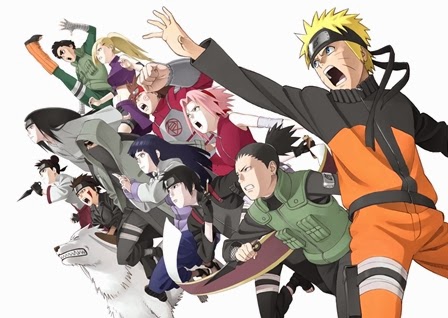
Film Saint Seiya Movie 5 Sub Indo Goblin
07-Ghost Subtitle Indonesia Batch. 5 Centimeters per Second BD Subtitle Indonesia. The School Idol Movie BD Subtitle Indonesia Love Stage!!
Original run July 9, 2006 – December 17, 2006 Episodes 24 () Welcome to the N.H.K. ( N・H・Kにようこそ!, N.H.K. Ni Yōkoso!) is a novel written by, with a cover illustration by, and was published by in on January 28, 2002. The novel was first published in English by on October 9, 2007.
The story revolves around a 22-year-old asocial individual who gets aid from a strange girl who seems to know a lot about him, despite never having met him before. Common themes throughout the story deal with depression, isolation, existential dread, the hardships of life and how people must deal with them in their own way. The novel analyzes profusely the phenomenon, which is relatively widespread in Japan.
Chingiz ajtmatov kratkaya biografiya na kirgizskom yazike. Welcome to the N.H.K. Was adapted into a series, also written by Takimoto, with art. The manga was serialized between June 2004 and June 2007 in Kadokawa Shoten's. The manga's forty chapters have been collected into eight released in Japan and overseas. The English edition of the manga is published by Tokyopop, and the first volume was released in October 2006.
The novel was also adapted into a 24-episode television series by which aired in Japan between July and December 2006 on. Announced at that they acquired the English rights to the anime, and they released DVD volume one in October 2007 with volume two released in December 2007. In 2008, the anime became one of over 30 ADV titles acquired. In Japan, NHK refers to the public broadcaster, but within the series the main character believes it stands for Nihon Hikikomori Kyōkai ( 日本引きこもり協会, The Japanese Association), which is a reference to the 's claim of a subversive led by NHK (the real-life broadcaster) to create. While it mainly deals with the phenomenon of hikikomori, the plot also explores many other Japanese —for example,,.
Contents • • • • • • • • • • • • • Plot [ ] Story [ ] Welcome to the N.H.K. Revolves around the lives of several young adults all living in or around the city of. Many different lifestyles are shown though most of the time the story focuses on the concepts of being a (a reclusive individual who withdraws from social life), anime otaku, and having most of the characters experience intense feelings of depression and loneliness. The main protagonist is Tatsuhiro Satō, a university dropout entering his fourth year of unemployment. He leads a reclusive life as a hikikomori, ultimately coming to the conclusion that this happened due to some sort of conspiracy. One day just when his life seems entirely unchanging, he meets Misaki Nakahara, a mysterious girl who claims to be able to cure Tatsuhiro of his hikikomori ways.
She presents him with a contract basically outlining that once a day they would meet in the evening in a local park where Misaki would lecture to Tatsuhiro in an effort to rid him of his lifestyle. During these outings, many subjects are discussed, though they almost always pertain in some way to. One of their first meetings in fact deals with interpreting Tatsuhiro's recent dreams. Both Tatsuhiro and Misaki, however, have a tendency of over-doing things, such as hiding the truth, especially from each other and themselves.
Despite Misaki's offer and pressing attempts at salvation, it is Tatsuhiro's neighbor and high school friend, Kaoru Yamazaki, whom Tatsuhiro often turns to in moments of need and support. Despite his own idiosyncrasies, Yamazaki is one of the more stable characters in the story.

The plots within the novel, manga and anime are each rather different from one another, and many themes and personalities differ between each. The novel also regularly mentions drug use by the main character, and later, his friend, Yamazaki. This element of the story is downplayed in the manga (drugs Satō uses are referred to as 'legal purchased off the internet'), and left out of the story altogether in the anime (with the exception of Hitomi). This is likely due to several reasons, including a more public-friendly rating, as well as ultimately being unneeded for the progression of the plot.
Lolita themes present within the novel and manga have also been downplayed within the anime, where most of the women the characters lust after are of mature age, although brief hints still remain. [ ] The Nihon Hikikomori Kyōkai (N.H.K.) ( 日本ひきこもり協会) of Satō's imagination is supposedly a sinister which aims to turn people into hikikomori. No clear reason why they would do this is offered, although Satō considers the potential of an 'army' of displaced individuals, and it is mentioned that hikikomori are created for the purpose of giving society someone to look down upon, making themselves feel superior. The majority of the N.H.K.'